|
Spotlights Our research work has led to actual effect on quite a few industrial systems. |
| ¡î Reliable Networking for Containerized Large Model Training |
✎ Containerized large
model training has become popular in recent years, but its
network support is challenging due to the high dynamics of
containers, the complex interplay between underlay and overlay
networks, and the stringent requirements on failure detection
and localization. To address this, we develop
SkeletonHunter,
a container network monitoring and diagnosis tool that leverages
the intrinsic and regular sparsity of the network traffic
incurred by large model training. It reasons about the traffic
skeleton, which comprises a
crucial set of network paths consistently traversed by the
training traffic, so as to reliably
(with 98.2% precision and 99.3%
recall) detect and localize network
failures in short time (~8 seconds). ♨ Paper in SIGCOMM'25 |
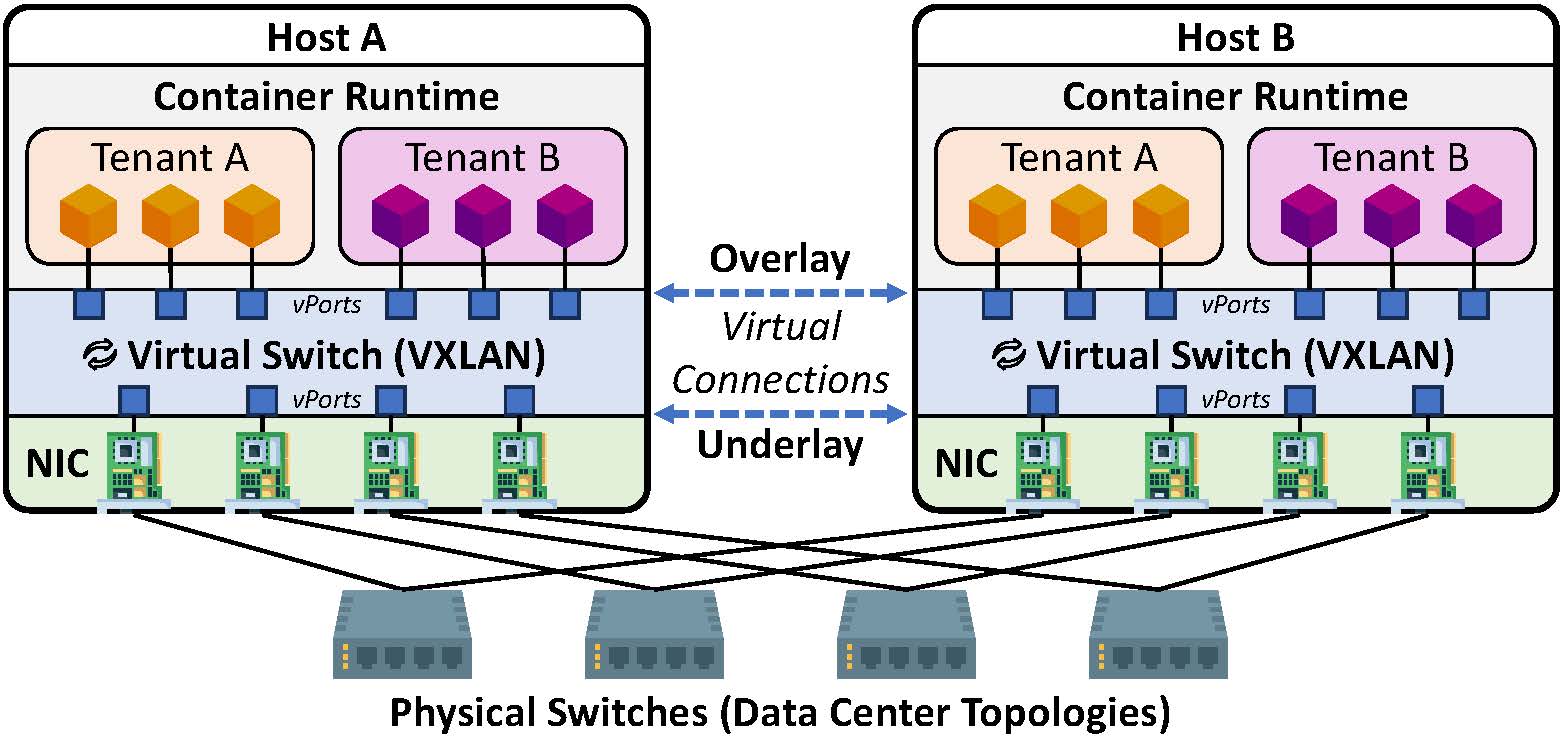 |
| ¡î Mitigating Scalability Walls of Container Networks | ✎ RDMA-offloaded container networks (RCNs) provide high-performance data communications among containers. But this is subject to scale¡ªwhen there are millions of containers running in a data center, the performance drops sharply. In particular, we observe that most performance issues are related to RDMA NICs (RNICs), whose defects might constitute the ¡°scalability wall¡± of the RCN. Hence, we conduct combinatorial causal testing to efficiently reason about an RNIC's architecture model, effectively approximate its performance model, and proactively optimize the offloading schedule. We embody the design into a practical system dubbed ScalaCN, which can increase the bandwidth by 1.4¡Á and decrease the latency by 31%. |
 |
|
¡î
Mobile Cloud Gaming with Low Interactive Latency
|
✎ Via cloud-side computing & rendering, mobile cloud gaming (MCG) should deliver high-quality gaming experience to budget mobile devices. But our study on mainstream MCG platforms reveals that even under good network conditions, all platforms exhibit high interactive latency of 112-403 ms, from a user-input action to its display response. To address this, we conduct the first in-depth analysis on interactive latency, and identify VSync (the synchronization primitive of Android graphics pipeline) to be a key contributor to the excessive interactive latency. Thus, we design a whole-loop regulator (LoopTailor) to minimize VSync events, reducing the latency to stably below 100 ms. |
 |
| ¡î Efficient Virtual System-on-Chip on Heterogeneous Hardware | ✎ Emerging mobile apps (e.g. UHD/AR/VR/metaverse) require accessing diverse high-throughput hardware like video codecs, cameras, and image processors, but today's mobile emulators exhibit poor performance when emulating them. We pinpoint the major reason to be the discrepancy between guest's and host's memory architectures -- mobile guest's centralized memory on system-on-chip (SoC) vs. PC/server's separated memory on individual hardware. It makes the shared virtual memory (SVM) architecture of mobile emulators highly inefficient. To address this, we design vSoC that enables virtual devices to efficiently share data through a unified SVM framework, and implement it for Android and OpenHarmony. It has been adopted by the Huawei DevEco Studio IDE with millions of developers. |
 |
| ¡î High-Performance Mobile Emulation through Graphics Projection | ✎ Mobile emulation is pivotal to the mobile ecosystem by facilitating app debugging, PC-based mobile gaming, market-scale malware detection, and so on. By adding a small-size graphics projection space inside the guest memory, where the critical control contexts and resource handles required by the host GPU are strategically maintained and delivered, we build a high-performance Android emulator called Trinity which exhibits excellent efficiency, compatibility, and security at the same time for the first time. It has been adopted by the Huawei DevEco Studio IDE with millions of developers. |
 |
| ¡î A Better Process Management Model for Android |
✎ Android users constantly suffer from slow UI responsiveness
(SUR). We conduct the first large-scale measurement study on SUR
with 47M devices, identifying the root causes of SUR from the
perspectives of device, system, application, and app market. The
largest root cause lies in the wide existence of ¡°hogging¡± apps,
which persistently occupy an unreasonable amount of system
resources by leveraging the optimistic design of Android process
management. Hence, we remodel Android process states by fully
considering their time-sensitive transitions and the actual
behaviors of processes, reducing the occurrences of SUR by
60%, saving the battery consumption by 10.7%, and benefiting
hundreds of millions of MIUI
OS
users. ♨ Paper in MobiCom'24 |
 |
| ¡î Nationwide Study on Cellular (Data Connection) Reliability | ✎ We make the first large-scale, in-depth study on cellular reliability with over 70M Android phones across 34 different hardware models. We identify the critical factors that affect cellular reliability and clear up misleading intuitions indicated by common wisdom. More importantly, we have developed enhancements that effectively address cellular reliability issues with remarkable real-world impact -- our optimizations on Android's cellular implementations have reduced 40% cellular connection failures for 5G phones and 36% failure duration across all phones, benefiting ~28M MIUI OS users. |
 |
| ¡î Why Does Android Stop Responding? |
✎ Android users often experience poor responsiveness, in
particular Application Not Responding (ANR) and System Not
Responding (SNR) that directly disrupt user experience. We make
an in-depth study of ANR/SNR at scale in the wild, uncover
multifold root causes of ANR/SNR, and pinpoint the largest
pathology that roots in Android's flawed implementation of Write
Amplification Mitigation (WAM). We design a practical approach
to eliminating this largest root cause, which has been adopted
by the MIUI
OS,
benefiting over 20 million users. ♨ Papers in MobiCom'20 and TMC'24 |
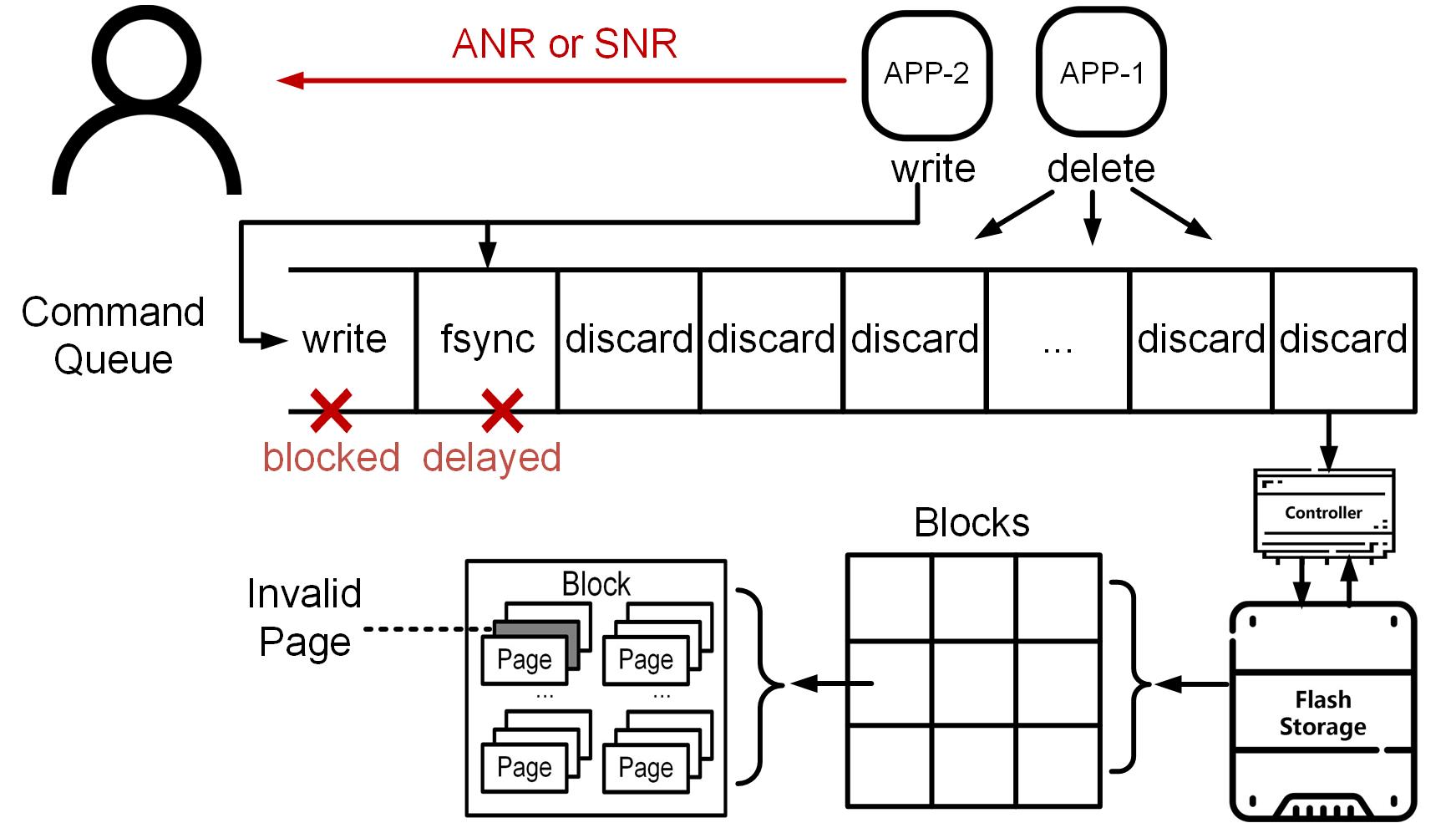 |
| ¡î High-Fidelity Mobile Emulation with Virtual Device Farms |
✎ To understand the fidelity of virtual devices for mobile
app testing in industrial settings, we build a massive
commercial testing infrastructure that consists of a physical
device farm and its virtualized counterpart. We show that
high-fidelity app testing can be achieved by sensible design and
implementation of virtual device farms, and present effective
solutions to significantly improve testing fidelity. We also
share our experiences of using virtual device farms to
substantially improve the efficiency and accessibility of mobile
app testing, without compromising safety. The resulting
solutions have been adopted by
ByteDance and
Google Android Emulator. ♨ Paper in MobiCom'23 |
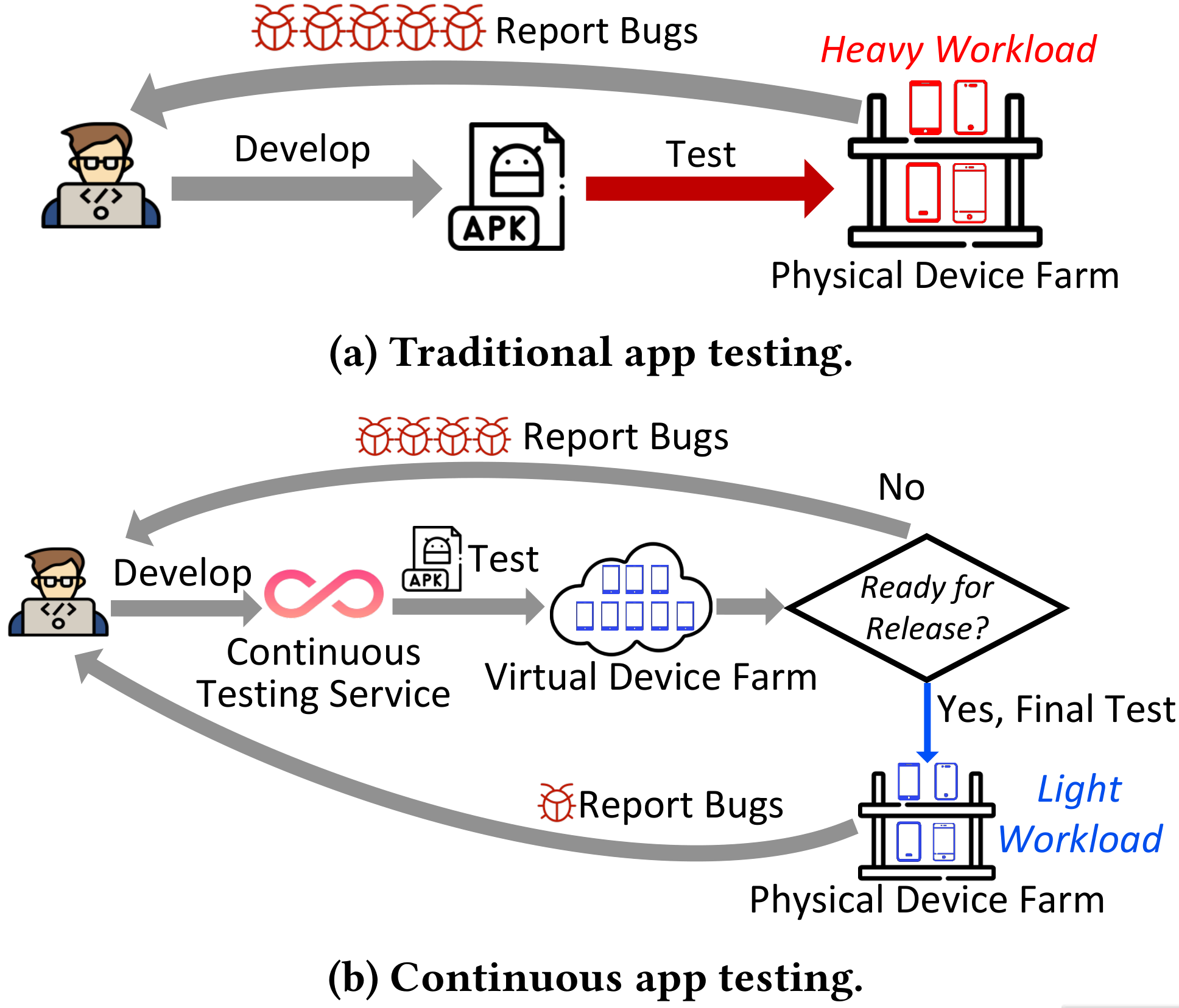 |
| ¡î Nationwide Study on Mobile Access Bandwidth |
✎
By
working with a major mobile bandwidth testing app (UUSpeedTest)
to deeply analyze mobile access bandwidths of 3.54M end
users in China, we reveal the root causes of the critical
performance gaps between the advertised 4G/5G/WiFi access
bandwidth and what is actually delivered in the wild. Based on
the analysis insights, we build an ultra-fast, ultra-light
bandwidth testing service (Swiftest)
to dramatically reduce the test time (from 10 seconds to ~1
second) and backend cost. ♨ Papers in SIGCOMM'22 and TMC'25 |
 |
| ¡î Fast and Light Bandwidth Testing for Internet Users | ✎ Internet bandwidth testing services (BTSes) measure the access bandwidth of end hosts, which are however oftentimes slow and costly. To make BTS fast and cheap while maintaining high accuracy, we develop FastBTS through a novel statistical sampling framework termed fuzzy rejection sampling. With only 30 test servers, FastBTS achieves the same level of accuracy compared to the state-of-the-art BTS (SpeedTest.net) that deploys 12,000+ servers. Most importantly, FastBTS makes bandwidth tests 5.6¡Á faster and 10.7¡Á more data-efficient. |
 |
| ¡î Xiaomi MVNO |
✎ Mobile virtual network operators (MVNOs) operate on top of
existing cellular infrastructures of base carriers, while
offering cheaper or more flexible data plans. We present a
two-year measurement study towards understanding various key
aspects of today's MVNO ecosystem, based on
Xiaomi MVNO with 1M
customers. Our measurements clarify several key concerns raised
by MVNO customers. We also leverage big data analytics and
machine learning to optimize an MVNO's key businesses such as
data plan reselling and customer churn mitigation. ♨ Papers in MobiSys'19 and TON'20 |
 |
| ¡î Mobile Gaming on PCs with Direct Android Emulation |
✎ Efficiently emulating heavy 3D Android games on Windows PCs
has long been desired while highly challenging. This paper
presents DAOW, a commercial
game-oriented Android emulator that implements the idea of
direct Android emulation, which directly executes Android
app binaries on top of x86-based Windows PCs without employing
virtualization techniques. It has been widely adopted by 50M+ PC
users to run thousands of heavy 3D Android games, achieving
almost the same level of smoothness as being played natively on
Android smartphones. ♨ Paper and Best Demo Award in MobiCom'19 |
 |
| ¡î APIChecker |
✎ By examining apps' API invocations, we build APIChecker, an
machine learning-based mobile malware detection system. The key
to successfully developing such systems is manifold: 1) feature
selection, 2) feature engineering, 3) app analysis speed, 4)
developer engagement, and 5) model evolution. Failure in any of
the above aspects would lead to "wooden barrel effect" of the
entire system. APIChecker is adopted by
Tencent Android App Store
to efficiently check 10K newly submitted apps per day. ♨ Papers in EuroSys'20 and TPDS'21 |
 |
| ¡î OverlayChecker |
✎ As a key UI feature of Android, overlay enables one app to
draw over other apps by creating an extra View layer on top of
the host View. While greatly facilitating user interactions with
multiple apps at the same time, it is often exploited by
malicious apps (malware) to attack users. To combat this threat,
we build OverlayChecker to automatically detect overlay-based
malware at market scales. It is adopted by
Tencent Android App Store
to efficiently check 10K newly submitted apps per day. ♨ Papers in MobiSys'19 and TMC'22 |
 |
| ¡î HoneyCloud |
✎ Linux-based IoT devices have emerged as one primary target of
today's cyber attacks. To understand realistic attacks on such
devices at scale in the wild, we deploy 4 hardware IoT honeypots
and 108 specially designed software IoT honeypots across eight
mainstream public clouds. The measurement study leads to
multi-fold insights towards actionable defense strategies that
can be adopted by IoT vendors and end users. ♨ Paper in MobiSys'19 |
 |
| ¡î UFC2: User-Friendly Collaborative Cloud | ✎ Mainstream cloud storage services all support collaborative file editing, which however often leads to poor experiences. We unravel a number of their design and implementation issues as the root causes. Thereby, we reconsider their collaboration support from a novel perspective of operations without using any locks. To enable this, we design intelligent approaches to the inference and transformation of users' editing operations, as well as optimizations to the maintenance of files' historic versions. We build an open-source system UFC2 to embody our design, which can avoid most conflicts with little overhead. |
 |
| ¡î Web-based Delta Sync for Cloud Storage Services | ✎ Striving towards a practical web-based delta synchronization solution for cloud storage services (e.g., Dropbox). Leveraging a series of state-of-the-art web techniques (JavaScript, WebSocket, HTML5 File APIs, and asm.js) and cloud techniques (virtual machine, object storage, and node.js), we have developed an open-source prototype solution WebR2sync+, and a usable online system THU-CloudDisk that has integrated our solution. |
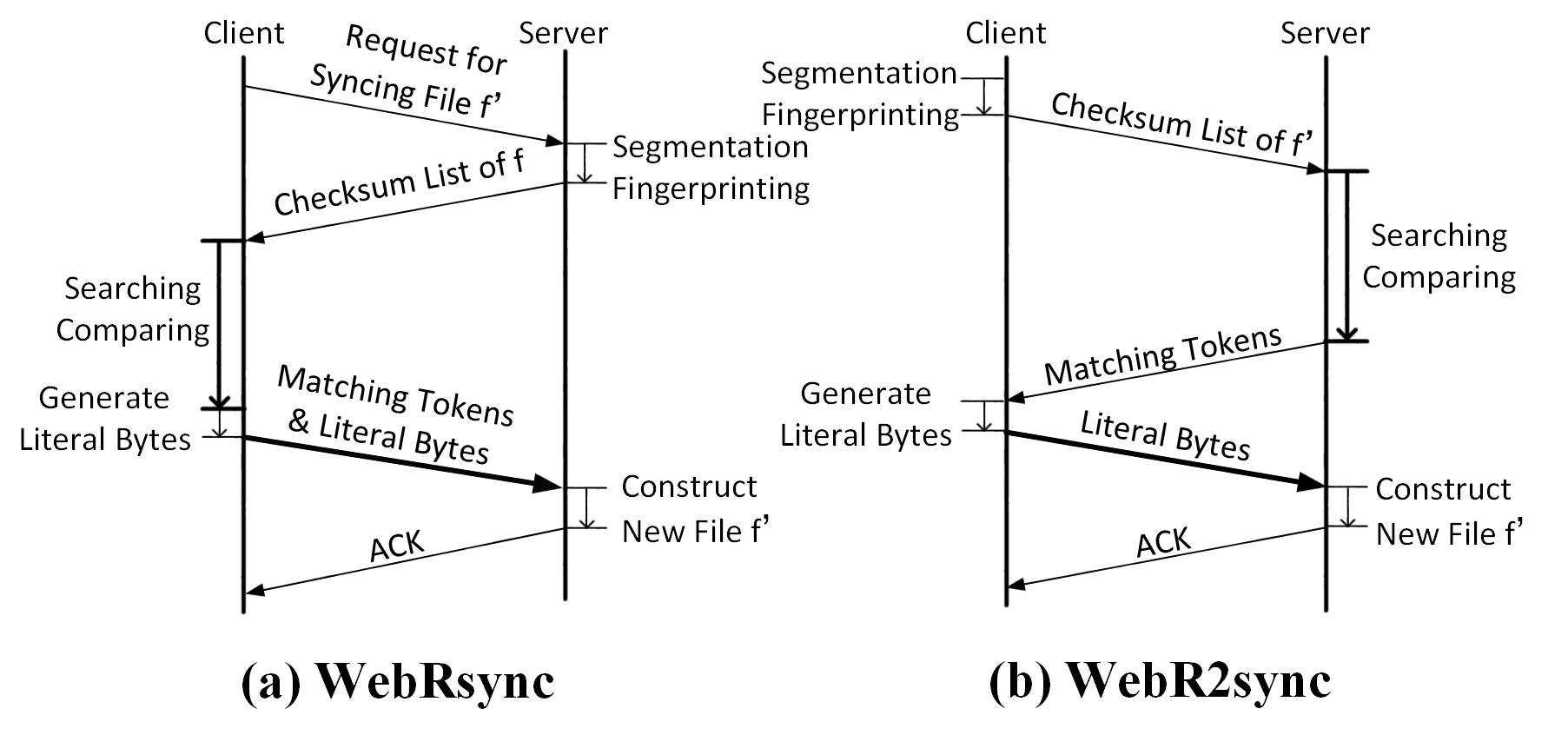 |
| ¡î Nationwide Census on WiFi Security Threats |
✎ By deploying a crowdsourced WiFi security checking system on
14 million mobile devices, we characterize a wide variety of
real-world WiFi security threats at an unprecedented scale,
involving 19 million WiFi access points (APs) mostly located in
China. Surprisingly, we detect attacks at around 4% of all WiFi
APs, uncover that most WiFi attacks are driven by an underground
economy, and provide strong evidence of web analytics platforms
being the bottleneck of its monetization chain. Our system has
been adopted by WiFi.com. ♨ Paper in MobiCom'21 |
 |
| ¡î FBS-Radar: Uncovering Fake Base Stations at Scale in the Wild | ✎ Yet another key component of Baidu PhoneGuard, FBS-Radar precisely identifies malicious fake base stations (FBSes) and accurately geolocates FBSes based on crowdsourced data of nearly 100 million users. It protects users from millions of spam and fraud SMS messages per day, and has helped the Ministry of Public Security of China arrest hundreds of FBS operators. Also, we have made a public website that shows the current locations of detected FBSes in real time. |
 |
| ¡î Cross-App Cellular Traffic Optimization with Baidu TrafficGuard | ✎ As a key component of Baidu PhoneGuard, Baidu TrafficGuard is a third-party mobile traffic proxy widely deployed for Android 4.0+ devices in China. It effectively reduces cellular traffic using a network-layer VPN that connects a client-side proxy to a centralized traffic processing cloud. Most importantly, it works transparently across heterogeneous applications, so is not constrained to any specific app. |
 |
| ¡ï Cloud Download (or says Offline Download) | ✎ Achieving high-quality content distribution (especially for unpopular videos) by using cloud utilities as a cache to guarantee the data health and enhance the data transfer rate. Please try the large-scale Xuanfeng Cloud Download system! |
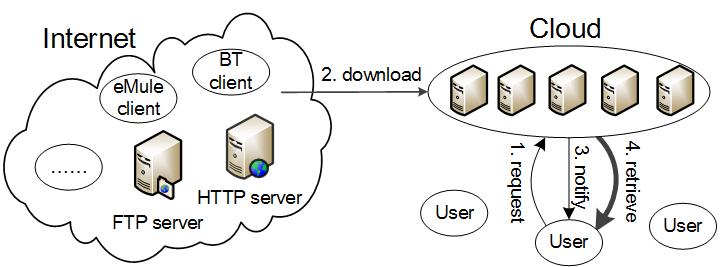 |
| ¡ï Cloud Tracker (or says Open-P2SP content distribution) | ✎ Dynamically tracking and integrating various third-party servers, contents and data transfer protocols all over the Internet into a large, open and federated P2SP (peer-to-server/peer) platform, so as to accelerate the content distribution from servers to clients and among peer swarms. It also facilitates load-balancing among the involved servers. Please try the large-scale Xunlei or Xuanfeng system! |
 |












